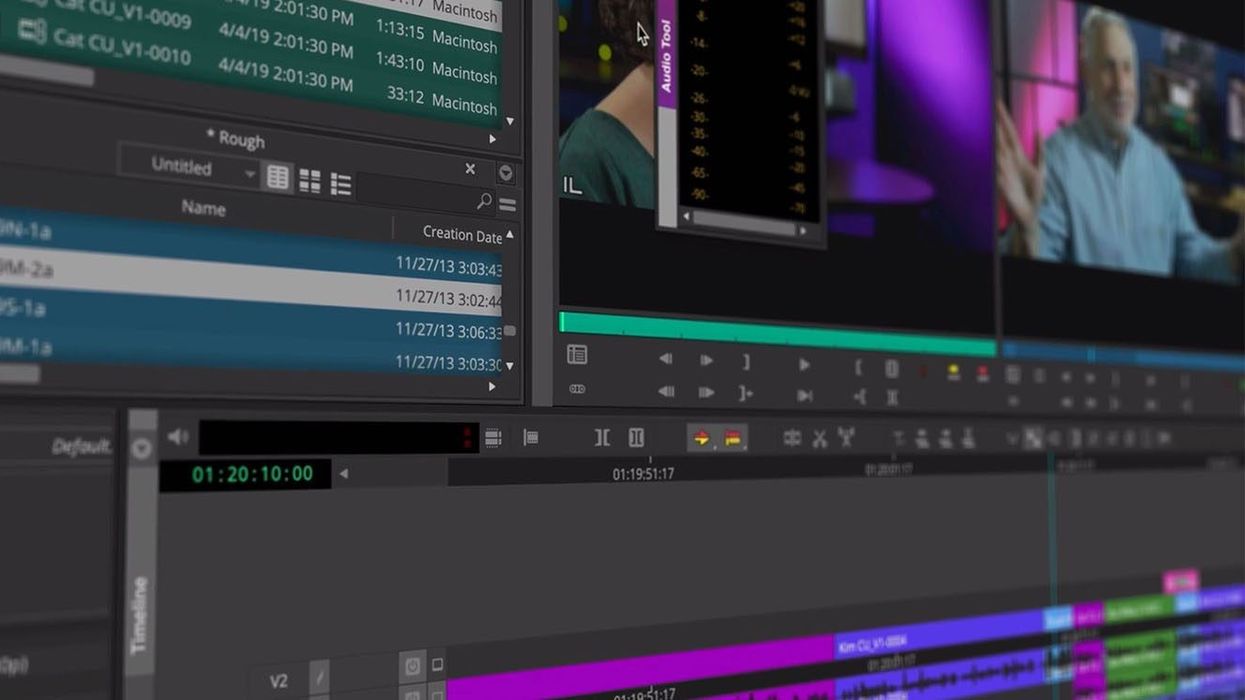Avid Media Composer Adds H.265/HEVC Support in Latest Update
With Media Composer version 2020.12, you can now link, playback, and export H.265/HEVC media.

After adding ProRes RAW support in version 2020.10, Avid has updated Media Composer to include native H.265/HEVC media support with version 2020.12.
This is great news for editors looking to save time, as they no longer are required to transcode the codec before adding it to timelines. The update brings several other new features including the ability to transcode alpha mattes, an AAC audio export option for MOV and MP4, an updated audio mixer, and improved interface settings.
In our review of Media Composer 2020, we found out how it sped up workflows for assistant editors. This latest version makes workflows even faster. The standout feature is the native support for H.265/HEVC, especially with more cameras adding the codec as a recording option. And if you still happen to own a Samsung NX1, a mirrorless camera that came on the scene in 2014 and recorded H.265 video only, you can finally stop using Samsung's free conversion software when cutting on Avid.
Editors can now import, play, and export HEVC directly in MC, a codec that is supported by YouTube.
While exporting, Media Composer offers two encoding profiles, H.265/HEVC Main Profile or H.265/HEVC Main 10 Profile. Main supports 8-bit color depth and Rec.709 color space. Main 10 supports Rec.2020 at a 10-bit color depth. Like with other export formats, Media Composer provides bit rate options for variable and constant or you can slide the target bit rate as you see fit.
Export Media Differences Between Sequences
There's a new option that allows editors to compare two sequences and export only the media differences between them. This can come in handy if you have multiple good takes of a scene and want to view them side by side on a larger screen or away from the editing bay.

Avid Titler+ Improvements
MC has added new shortcuts to its Titler+ including Ctrl+B, Ctrl+U, Ctrl+I to bold, underline, or italicize text. A Text Mode and Move Mode have been added to make editing text and moving objects easier. Also, a vertical text justification button has been added to the Titler toolbar, and you can write text vertically.
Audio Mixer Update
The Audio Mixer will now responsively adjust vertically and horizontally as the window is resized. You can also customize the items that appear in the window by selecting the Fast menu and selecting or deselecting the window options. You can prioritize the menus of the Audio Mixer and you can also map items from the Fast Menu to your keyboard and copy/paste/move track effects across slots. These are all great updates in the name of speed.
Custom Color Space/AAC Audio
With this release, you can choose a custom Color Space when exporting as MOV, MP4, or OpenEXR. Editors can also set Color Scaling to Legal or Full Range when exporting as MOV or MP4, which will be helpful for color grading. When exporting, there's also an option for the AAC (Advanced Audio Coding) audio when exporting as MOV and MP4, which will produce better audio quality over AC3 or MP3.
Other improvements to Media Composer include additional languages becoming available for PhraseFind and ScriptSync, and two new brightness sliders for bins that allow you to increase/decrease the brightness of bin icons and text and increase/decrease the brightness of bin windows. You can also panel windows with any floating window, and there's new ACES support for importing CLF (Common LUT Format) files.
We're enjoying these latest updates for Avid Media Composer. If you've never used the NLE, Avid does offer a free version in Media Composer First. Monthly plans for Media Composer Ultimate start at $9.99/mo if you're a student and go up from there. You can check out the details here.
Source: Avid

 No Film School's coverage of
No Film School's coverage of 









